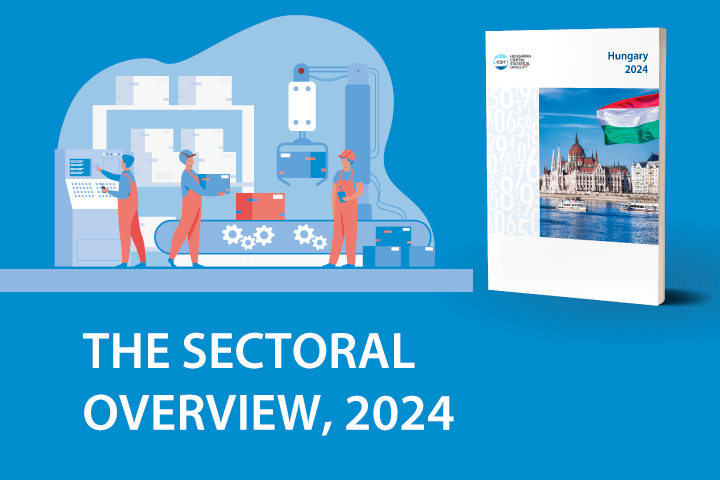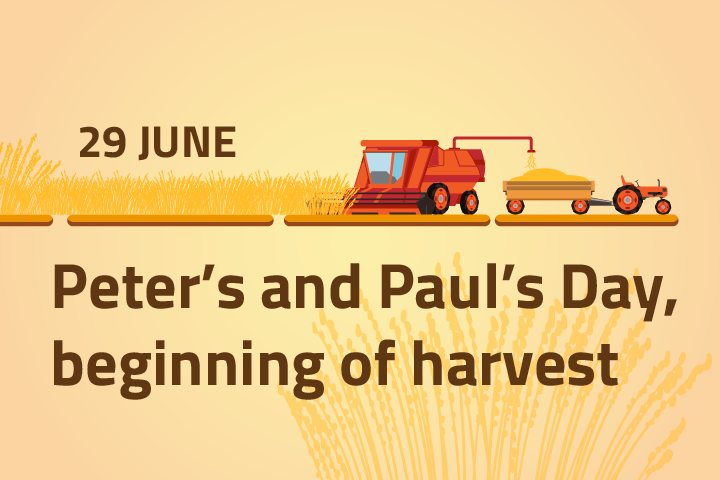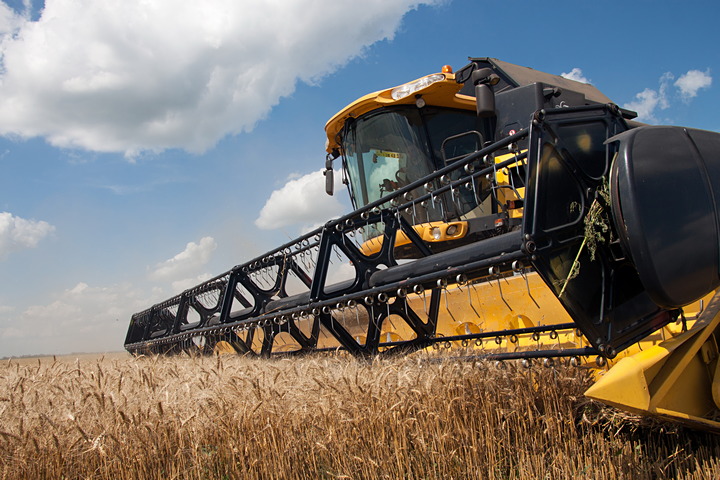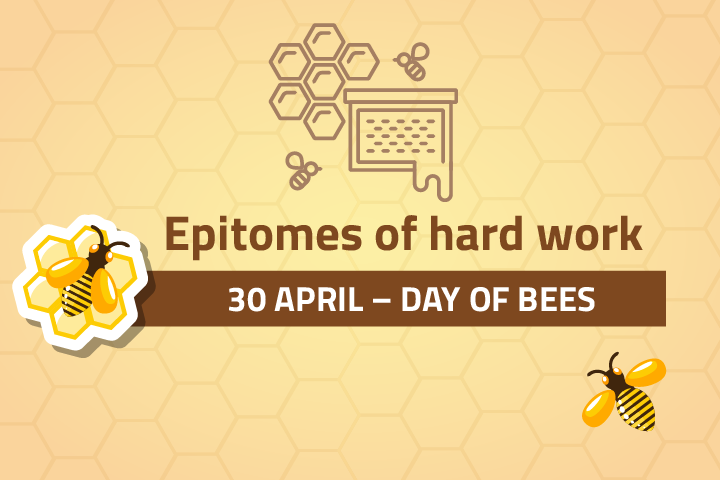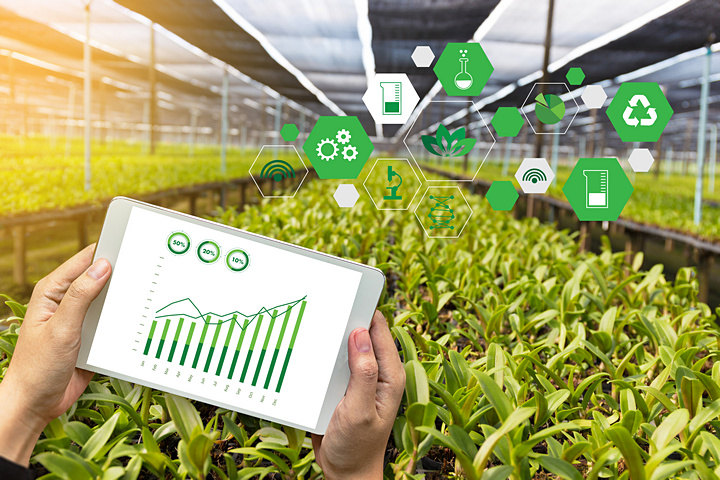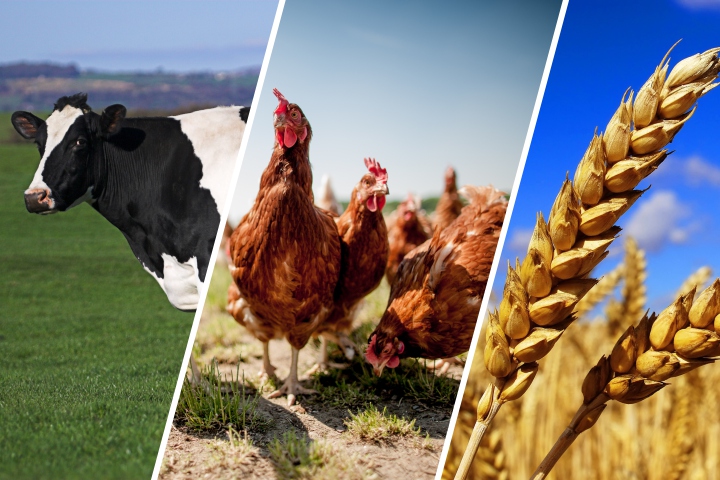Agriculture
Agricultural statistics aims at assessing the performance of agriculture. In connection with crop production the statistical domain takes account of the utilisation, rent and sales price of productive land, and the sales of produced products. It also includes data on livestock and the production and sales of animal products. The effects of agriculture on the environment are substantially influenced by the technology used in production, so the statistical domain covers data for example on organic farming and the use of plant protection chemicals. A farm structure survey as well is made at intervals of several years, in which the number, size and labour input of holdings are surveyed.
Key figures
Share of agriculture, forestry and fishing of gross value added
Indicator description
Agriculture, forestry and fishing section as a share of gross value added.
Source of data:
Summary Tables (STADAT)
Last data for period: 2023
Agricultural terms of trade
Indicator description
Agricultural producer price index divided by agricultural input price index, compared to the previous year.
Source of data:
Summary Tables (STADAT)
Last data for period: 2024
Change in annual rent for arable land, compared to previous year
Indicator description
Average of rent paid by leaseholders to landowners for use, weighted with the leased area. The indicator shows changes in land rents in forints compared to the previous year.
Source of data:
Summary Tables (STADAT)
Last data for period: 2023
Change in net entrepreneurial income in agriculture
Indicator description
Net entrepreneurial income measures the income from agricultural activities which can be spent on the remuneration of own factors of production – i.e. unpaid work (carried out by family members), plot of land owned by the agricultural holding and own capital. It is the income equal to net value added less compensation of employees, other taxes on production, rents and interest expenditures, plus other subsidies on production and interest revenues.
Source of data:
Summary Tables (STADAT)
Last data for period: 2024
Featured
Statistical Yearbook of Hungary, 2024
The yearbook provides an overview of Hungary's demographic, social and economic trends, environmental characteristics and their changes over time, with the help of tens of thousands of data in some 500 tables, charts and maps. In the chapter devoted to earnings and incomes, it is a novelty compared to previous years that net earnings in which allowances and types of exemptions are accounted for, too, came into focus from 2019. In the number of employees, people working in working time shorter than 60 working hours per month are also taken into account. In addition, the theme of environment is completed with areas declared world heritage sites by UNESCO.
Yearbooks, pocketbooks, data repositories
A new sub-page has been added to the HCSO website, more than 400 yearbooks, pocketbooks and data collections, a total of a hundred thousand pdf format pages close to 150 thousand excel tables and several thousand static and interactive graphs and maps are available for download. The sub-page offers the possibility of filtering these yearbooks, pocketbooks and data collections by reference year, serial name, format (PDF, XLS) and supplements (graphs, maps). Users may compile their own list of publications based on the year- and pocketbooks, data collections, adequate to their interests.
International Dog Day
The International Dog Day is celebrated since 2004. It aims to recognize the role of dogs in our everyday life, to popularize their adoption and draw attention to responsible animal ownership. On the occasion we offer an infographic presenting the number of dogs living in Hungary, the most common breeds, most popular dog names.
Hungary 2024 – The Sectoral Overview
Our series of infographics, based on the most important data from the Hungarian-language publication Hungary, 2024 provides a comprehensive picture of the social and economic state of our country and the main characteristics of our environment. The next infographic in the series presents the main data of the sectoral overview. The English extract from the publication is available here: Hungary, 2024, and the full Hungarian-language version here: Magyarország, 2024.
Hungary, 2024
Hungary’s GDP increased by 0.5% amid global challenges in 2024. The performance of goods-producing industries lessened, while that of service-providing ones rose, which shows the duality of economic trends. Household consumption picked up, which was considerably encouraged by the purchasing power of earnings growing again with the inflationary wave calming down. Besides, the data series reveal that the level of employment reached another peak.
29 June, Peter’s and Paul’s Day, beginning of harvest
According to popular tradition, 29 June, Peter’s and Paul’s Day, is the beginning of harvest, wheat becoming ready for cutting around that day. Hungary is one of the pantries of Europe, a substantial part of the production of a quantity amply exceeding the internal demand (typically some half of wheat) being sold on external markets. Following the decline after the regime change, the domestic average yields of ear cereals dynamically rose, which is proven by all of the 10 years with the highest specific yield for barley and rye and seven years – including the record, 2021 – for wheat following 2010.
Snapshots, 2024 – Agriculture
Hungary’s agriculture contributed to the gross value added of the national economy to a higher extent than the EU average (1.6%), by 2.8%, according to preliminary data, in 2024. A total of 12.6 million tonnes of cereals, 16% less than in 2023, were harvested on 2.2 million hectares. 1.8 million tonnes of sunflower were produced, with which Hungary became the largest sunflower producer in the European Union.
Day of Bees, 30 April
Bees are useful not only for honey production but a large part of the world’s agriculture also depends on them: by their pollinating activity they influence the reproduction of many plants. On the initiative of the Hungarian National Association of Beekeepers, the Day of Bees is held on 30 April from 1994 in Hungary, since life starts to flourish in beehives at around this time. The UN declared 20 May as World Bee Day from 2018, to draw attention this way as well to the importance of beekeeping. In addition to its use for food, honey is one of the oldest natural medicinal products, having about 70 kinds of curative effects as we know today.
Value of output of agriculture 8.0% lower than in previous year, Performance of agriculture, 2024 (first estimate)
The total output of agriculture was above 4.0 thousand billion forints in 2024, being 8.0% lower than in the previous year. The lessening resulted from a combined narrowing of 4.4% in the total volume of production and of 3.8% in the price level. The volume of crop production was 11% smaller and that of livestock production 4.9% larger. The lessening in production affected almost all product groups, except for potatoes, live animals and animal products. The performance of agriculture became lower first of all owing to the weather with a lack of precipitation and the summer drought, which factors held back crop production. The expanding volume of livestock production did not compensate for the effect of the lessening producer price level of the sector.
Performance of domestic agriculture in 2022 – (Economic accounts for agriculture, 2022)
The output of agriculture exceeded 4 thousand billion forints in Hungary in 2022, which was 19% higher than a year earlier. The growth was due to a 44% increase in prices. Owing to the weather with little precipitation, there was a decrease in the harvest of all crops, and a significant rise in expenditure hindered the performance of livestock production, too. Hungary made up 1.9% of the EU’s agricultural output. The net amount of subsidies on domestic production was 809 billion forints.
Related themes
Methodological information
Related links
First releases |
Latest release | Next release |
|---|---|---|
| Performance of agriculture, 2024 (first estimate) | 06/12/2024 | – |
Release and revision calendarPublication repertory
Census data |
Census |
|---|---|
| Integrated Farm Statistics data collection – IFS 2023, finalised data | IFS 2023 – Integrated Farm Statistics data collection |
| What characterised farms in Hungary? | IFS 2023 – Integrated Farm Statistics data collection |
| Integrated Farm Statistics data collection – IFS 2023, preliminary data | IFS 2023 – Integrated Farm Statistics data collection |
| Hungarian agriculture in numbers | Agricultural census – FSS 2020 |
| Publications of Farm Structure Survey – Excel tables | Agricultural census – FSS 2020 |
| Farm structure data for agriculture (e.g. used land area, livestock, labour force) | Agricultural census – FSS 2016 |



